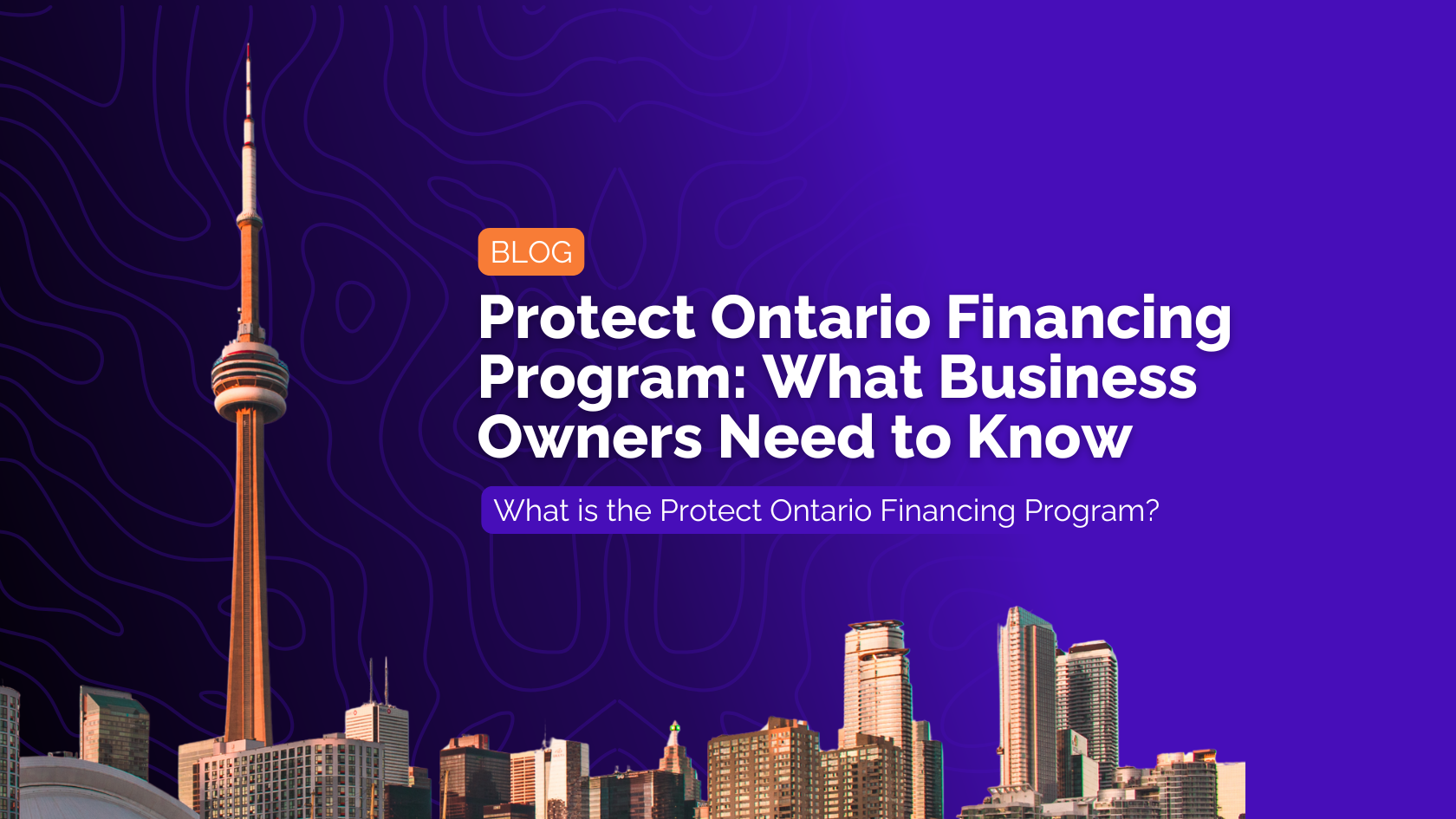Running a business in Ontario has never been easy, and the recent U.S. tariffs on steel, aluminum, and automotive products have only added to the challenge. If your company is feeling the squeeze, the Ontario government has introduced a new initiative that may help: the Protect Ontario Financing Program (POFP).
This program is designed to give Ontario businesses breathing room by covering working capital costs when tariffs threaten cash flow. Here’s what you, as a business owner, need to know.
What is the Protect Ontario Financing Program?
The POFP is part of a $5 billion Protecting Ontario Account announced in the 2025 Ontario Budget. Out of this, $1 billion has been set aside to help companies directly affected by U.S. trade measures.
In plain terms: if tariffs are making it hard to pay your bills, keep your staff, or manage day-to-day expenses, this program provides access to government-backed loans to stabilize operations.
Here are the main features of the financial support under POFP:
- Type of funding: A term loan, designed to cover working capital expenses (payroll, utilities, lease payments etc.).
- Minimum size: At least CAD $250,000.
- Repayment terms: Up to 72 months (i.e. 6 years). Annual repayment frequency.
- Other favourable features: No prepayment penalty. At the discretion of the province, there may be options such as principal-free periods (e.g. first 12 months) in certain cases.
- Stacking: Businesses can “stack” (combine) POFP funding with other federal funding programs. With respect to provincial support programs — stacking is permitted only if the business already has a previously approved, active project. New projects under other provincial programs can’t stack.
Who Can Apply?
To qualify, your business must check these boxes:
- Incorporated or registered in Ontario (for-profit, not nonprofit/charity).
- Operating in or supplying the steel, aluminum, or automotive sector.
- At least $2M in annual revenue.
- 10 or more full-time Ontario employees.
- In business for at least 3 years, with financial statements to prove it.
- Facing real working capital pressure because of the tariffs (payroll, leases, utilities, etc.).
- Already tried (or been declined by) federal support programs before applying here.
Who’s Ineligible to Apply?
- Nonprofit organizations and charity organizations
- Startups
- Businesses seeking a loan for:
- buying new property/equipment
- business buyouts
- relocating
- refinancing
Eligible vs. Ineligible Uses of Funds
Eligible uses (working capital needs):
- Payroll and employee-related costs
- Lease or rent payments for business premises
- Utilities (electricity, water, gas, internet, etc.)
- Insurance premiums
- Supplier invoices for raw materials or goods already committed
- Other recurring overhead expenses that keep operations running
Ineligible uses:
- Buying new property, equipment, or vehicles
- Business acquisitions, mergers, or buyouts
- Relocating or expanding to a new location
- Covering personal expenses or dividends to owners
- Start-up costs for a new venture
- Paying off shareholder loans
Pros & Potential Limitations
Here are some of the advantages and some issues to watch:
Pros
- Immediate liquidity: Helps companies manage overhead and avoid layoffs: covering payroll, lease, utilities, etc. Can make the difference between staying afloat vs shutting down or downsizing.
- Scale & Focused Relief: A large-scale program ($1B in this first phase), targeted at sectors most affected by trade disruptions. Helps to focus assistance where it’s most needed.
- Flexibility in repayment / favourable borrower terms: No penalty for early repayment; possible grace/principal-free periods in some cases.
Limitations / Criticisms
- High threshold excludes smaller businesses: Minimum $2M revenue, 10 employees, $250,000 loan minimum: many smaller firms (including those in the supply chain) will be ineligible. The Canadian Federation of Independent Business (CFIB) has raised this concern.
- Must first try federal programs: This requirement might delay access or add complexity or uncertainty. Some firms may be caught in legwork with federal options that are slow or not well suited.
- Focus only on working capital: Costs such as capital expenditures for new equipment, relocation, acquisitions etc., are excluded. For businesses that need broader restructuring or investment, this might not suffice.
- Potential time lag: Even though the government aims to get funds out quickly and uses third-party assessment, applying, verifying eligibility, doing due diligence etc., still takes time. Businesses with urgent cash flow crunches may still find the wait difficult.
How to Apply / Next Steps
- Start with the eligibility tool on the Ontario government website to see if you meet the preliminary criteria.
- If you appear to qualify, you’ll be invited to submit a full application with supporting documents (financial statements, proof of tariff impact, federal program attempts).
- Be prepared to show: proof of revenue, number of full-time employees, financial history (at least 3 years), evidence that the tariff measures are having material working capital impact, and that federal supports were considered but are not adequate.
- If approved, the term loan will be structured, and repayment terms agreed; funds will then be disbursed.
Bottom Line for Ontario Business Owners
If your company is in steel, aluminum, auto manufacturing, or the supply chains tied to them, and you’re struggling with tariff impacts, the Protect Ontario Financing Program could be a lifeline. It’s not a grant, but it can cover critical short-term costs and protect your workforce while you navigate uncertainty.
For businesses that don’t meet the thresholds, keep an eye out for other federal and provincial programs designed for small and mid-sized enterprises.

